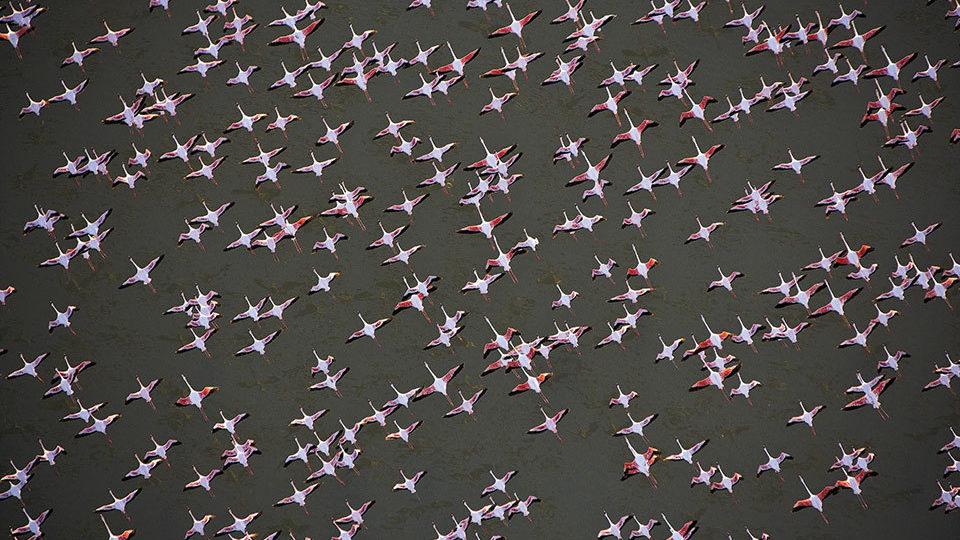In the last two decades, the negative impact of human activities on the environment has reared its ugly face in most parts of the world. Ethiopia’s Central Rift Valley lakes have not been spared either. Three inter-connected lakes in particular – Ziway, Abijata and Shalla – have perhaps bore the heaviest brunt.
These lakes form part of the seven Ethiopian Rift Valley lakes, the northernmost of the African Rift Valley Lakes system that extends from the Afar depression southwards to the Turkana depression on the Kenyan border. Located on the expanse savannah region about 200 kilometers south of Addis Ababa, the Ziway-Abijata-Shalla sub-basin critical for the survival of the local communities and migratory birds.
Local communities use Ziway’s freshwaters for domestic use and to irrigate their small holding farms mainly for food and to boost incomes, where possible. Other large water abstractors are foreign-owned commercial farms. These human activities have reduced water flow from Ziway to Abijata via River Bulbula posing a serious threat to the natural water system of the sub-basin.
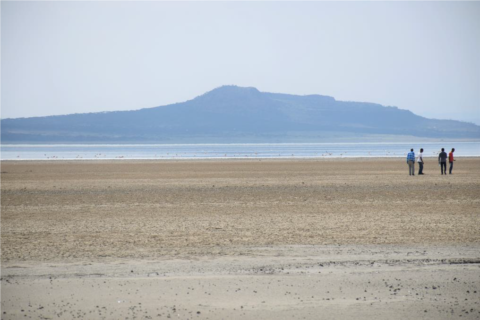
Receding Lake Abijata
Further, Abijata has been receding at an alarming rate due to direct abstraction of its waters for a soda ash extraction plant. In the 1980s, this alkaline lake with no outlet was more than 200 square kilometers; today it is less than half of that. Together with Shalla, the two were established as a national park in 1963 to conserve aquatic birds. With an area of 887 square kilometers, of which 482 square kilometers is the lake ecosystem while the remaining is terrestrial, Lake Abijata-Shalla National Park provides food and habitat for 108 migratory water bird species and hosts 91% of those that migrate through Ethiopia. The pink-plumed lesser flamingos feed on the blue-green algae found in Abijata.But as the lake shrinks, it becomes more saline, poisoning the algae. Inevitably, flamingo populations have diminished.
Other human threats such as livestock grazing, cutting trees for wood fuel and charcoal, and sand harvesting have also contributed to the Park and surrounding area’s degradation and water level reduction of Abijata in particular.
Involving Youth in Nature-Based Solutions
To reverse this growing situation, various stakeholders including Ethiopia Wildlife Conservation Authority (EWCA), local communities, Wetlands International and others are working closely to restore these Rift Valley lakes for social equity, economic efficiency and environmental sustainability.
Using a participatory and integrated approach where all stakeholders are involved in the design and implementation of activities, one of the interventions was the formation of community-based youth organizations whose livelihood is directly linked with the natural resource of the Park.
At the initiation of the projects from 2018, there were six youth associations. Today, four associations are actively working in strategic areas with severe resource degradation but where rapid restoration is feasible. These young minds have been trained in various areas including but not limited to restoration and alternative livelihoods, wetlands management and negotiation skills. So far, restoration has been conducted in over 700 hectares by 862 youth members from the four groups.
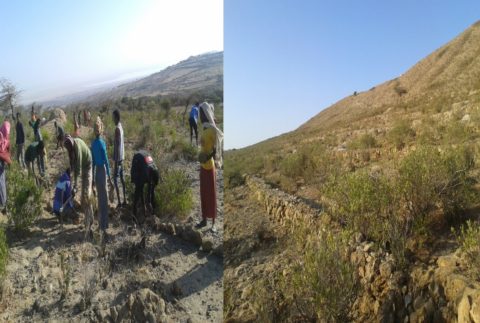
Youth undertaking soil and water conservation activities
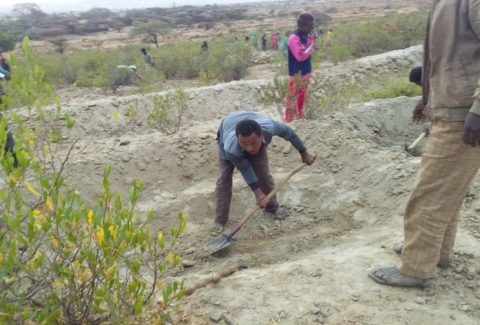
One of the outstanding groups, Mekane Fiqi Natural Resource Conservation Association, with 213 members of equal gender, has restored 118 hectares of land. This has been through nature-based solutions best suited for different sites.
“I started thinking about restoration and establishment of an association after observing frequent drought, rising temperatures and flooding damage to crops as we live in the valley. I learned that if we conserve our environment, we will change current situation and create tourist attraction as we live between the lakes. I discussed with my friends and initiated establishment of the association, ”says Mieso Usha, Mekane Fiqi Association leader.
To control erosion and promote water infiltration, hillside terraces, bunds, check dams, deep trenches, herring bones, eyebrow basins and half-moons along with grass and tree seedling plantations have been established on the upper and middle watershed areas. In addition, these sites have been secluded from human and livestock intrusion as part of the restoration. To enforce this, the youth have been conducting a 24-hour patrols.
As a result, some bare lands and deep gullies have been refilled with adequate soil and stabilized with sufficient grass and vegetation. The degraded areas have progressively been rehabilitated with full revegetation. With growing optimism of the youth members and motivation from their leadership, cutting of trees and charcoal burning has significantly reduced. With increased patrols and less human intrusion, wildlife is now exhibiting more freedom, easing their sighting and thereby security.
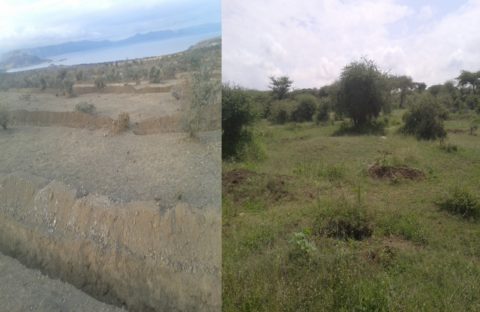
Before and after restoration
In recent times, the numbers of water birds observed around Lake Abijata are significantly on the rise. Soil erosion and siltation has reduced with smaller streams flowing down to the lake and the waters are gradually reclaiming its former shoreline.
These are gratifyingly significant gains despite the immense challenges. Restoring Ziway-Abijata-Shalla to form glory and safeguarding this critical sub-basin requires concerted efforts from all. Ethiopia’s youth are a leading light.
Lead image of lesser flamingos flying over Lake Abijata: David Doubilet

